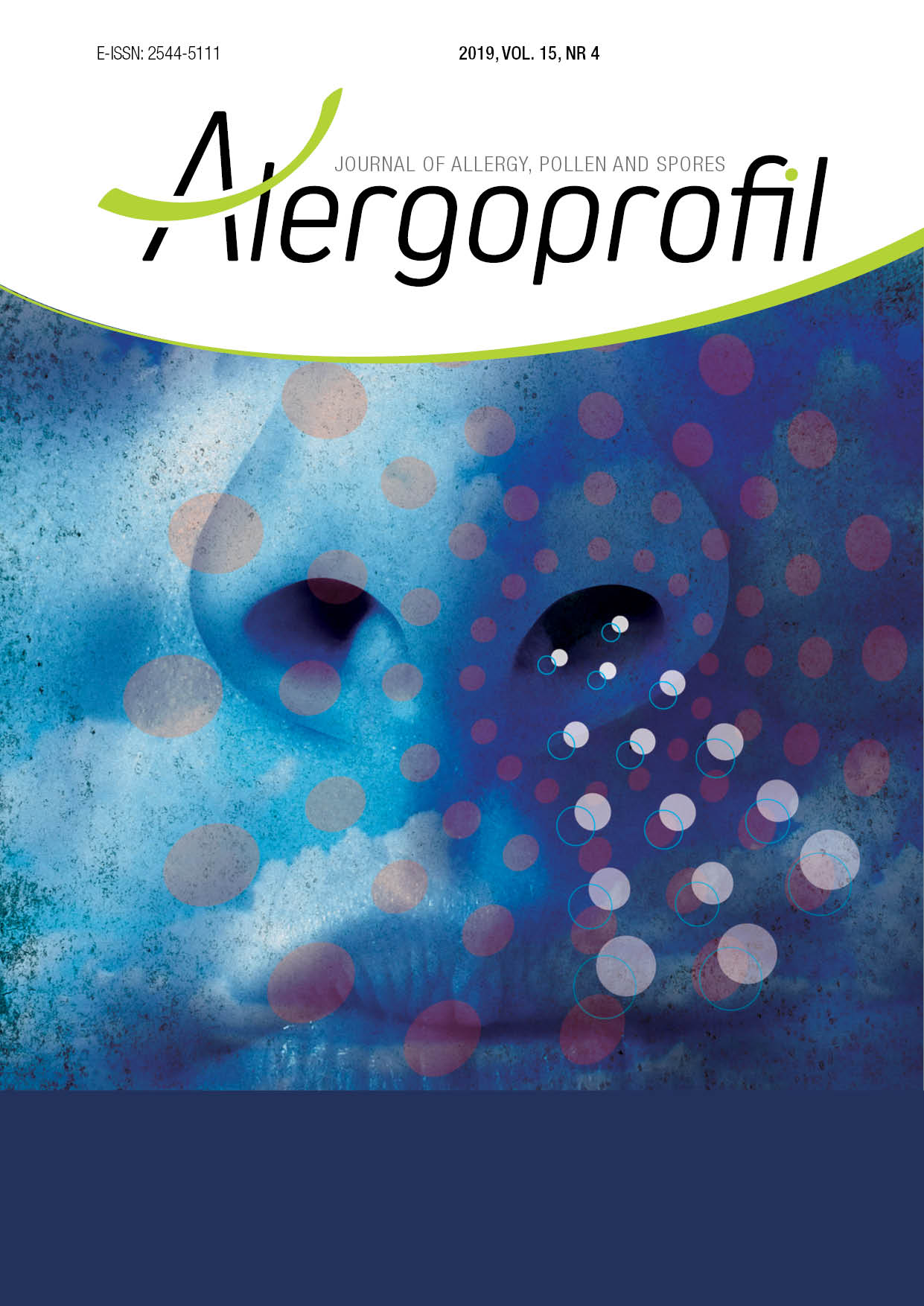Mugwort pollen season in the air of Poland in 2019
##plugins.themes.bootstrap3.article.main##
Abstrakt
The Asteraceae family is one of the largest families, comprising 67 genera and 264 species in Poland. However, only a few genera, including Artemisia, are potential allergenic sources. The aim of the study was to compare the mugwort pollen seasons in Bialystok, Bydgoszcz, Sosnowiec, Lublin, Piotrkow Trybunalski, Opole, Olsztyn, Szczecin, Warsaw and Wroclaw in 2019. The investigations were carried out using the volumetric method. Seasonal Pollen Index was estimated as the sum of daily average pollen concentrations in the given season. The mugwort pollen season is mainly observed in June, July and at the beginning of September. In 2019 the pollen season of mugwort started first in Opole, on the June 26th. At the latest, a pollen season ended in Bydgoszcz and Warsaw, at the end of September. The differences of pollen seasons duration were extremely considerable, from 35 to 83 days. The highest airborne concentration of 97 pollen grains/m3 was noted in Lublin on the July 31st. The maximum values of seasonal pollen count in Polish cities occurred between July 28th and August 12th, most often between in late July and early August. The highest mugwort pollen allergen hazard occurred in 2019 in Lublin, Warsaw, Opole and Wroclaw, and was 2–3 times higher than in other cities. The highest variability in the analysed seasons was found in start date, while the lowest in the peak value and SPI value. In the pollen season in 2019, 2 peaks of Artemisia pollen concentrations were observed as a result of the order of flowering of A. vulgaris and A. campestris. Information on the pollination of various Artemisia species will be used to avoid excessive exposure to allergens of these pollen grains.
Pobrania
##plugins.themes.bootstrap3.article.details##
Copyright: © Medical Education sp. z o.o. This is an Open Access article distributed under the terms of the Attribution-NonCommercial 4.0 International (CC BY-NC 4.0). License (https://creativecommons.org/licenses/by-nc/4.0/), allowing third parties to copy and redistribute the material in any medium or format and to remix, transform, and build upon the material, provided the original work is properly cited and states its license.
Address reprint requests to: Medical Education, Marcin Kuźma (marcin.kuzma@mededu.pl)
Bibliografia
2. Ralska-Jasiewiczowa M, Latałowa M, Wasylikowa K et al (eds). Late Glacial and Holocene history of vegetation in Poland based on isopollen maps. Polish Academy of Sciences, Cracow 2004.
3. Ziello Ch, Sparks TH, Estrella N et al. Changes to Airborne Pollen Counts across Europe. Plos One. 2012; 7(4): e34076. https://doi.org/10.1371/journal.pone.0034076.
4. Spieksma FTM, Corden JM, Detandt M et al. Quantitative trends in annual totals of five common airborne pollen types (Betula, Quercus, Poaceae, Urtica, and Artemisia), at five pollen-monitoring stations in Western Europe. Aerobiologia. 2003; 19: 171-184.
5. Mandrioli P, Comtois P, Dominguez E et al. Sampling: Principles and Techniques. In: Mandrioli P, Comtois, Levizzani V (ed). Methods in Aerobiology. Pitagora Editrice Bologna, Bologna 1998: 47-112.
6. Emberlin J, Savage M, Woodman R. Annual variations in the concentrations of Betula pollen in the London area 1961–1990. Grana. 1993; 32: 359-363. https://doi.org/10.1080/00173139309428965.
7. Rapiejko P, Stankiewicz W, Szczygielski K et al. Progowe stężenia pyłku roślin niezbędne do wywołania objawów alergicz-nych. Otolaryngol Pol. 2007; 61(4): 591-594.
8. Bogawski P. Fenologia kwitnienia i produkcja pyłku w zróżnicowanych warunkach mikroklimatycznych dużego miasta oraz ich wpływ na przebieg sezonu pyłkowego brzozy i bylicy w Poznaniu. Praca doktorska. Uniwersytet im. A. Mickiewicza w Poznaniu, Poznań 2016: 273.
9. Puc M, Rapiejko P, Lipiec A et al. The analysis of mugwort pollen count in selected Polish cities in 2014. Alergoprofil. 2015; 11(1): 27-31.
10. Rapiejko P, Lipiec A, Puc M et al. Mugwort pollen season in central and northern Poland in 2015. Alergoprofil. 2016; 12(1): 31-35.
11. Weryszko-Chmielewska E, Piotrowska-Weryszko K, Woźniak A et al. Analysis of mugwort (Artemisia) pollen seasons in selected cities in Poland in 2018. Alergoprofil. 2018; 14(4): 117-122.
12. Oteros J, Bartusel E, Alessandrini F et al. Artemisia pollen is the main vector for airborne endotoxin. J Allergy Clin Immunol. 2019. https://doi.org/10.1016/j.jaci.2018.05.040.

